Only one running watch brand admits its VO2 Max and recovery estimates aren't perfect
Polar lets you test your fitness level, muscular recovery, and sleep recovery manually, instead of blindly trusting its algorithm.
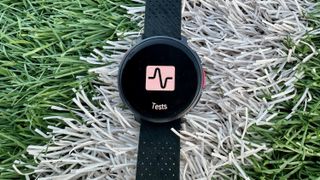
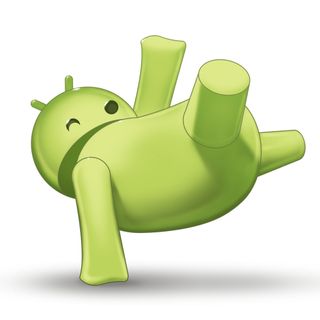
In this weekly column, Android Central Wearables Editor Michael Hicks talks about the world of wearables, apps, and fitness tech related to running and health, in his quest to get faster and more fit.
In an age where fitness watches and smart rings use passive health data and hidden algorithms to judge your health and athleticism, Polar takes a direct user approach. The Vantage V3 has a dedicated section for "Tests" on everything from nightly recovery and ECGs to VO2 Max. And while automatic tracking is more futuristic, I'm a fan of this alternative.
The annoying part of buying any new smartwatch is the learning period. You're promised the equivalent of a constant doctor's physical and a PE test on your wrist. But once you put it on, you'll wear it for days, if not weeks, before the software will share its findings or properly gauge your health and fitness level.
Blame my inability to sleep soundly while wearing a smartwatch or the fact that this job makes me switch watches every few weeks, but it's difficult for me to sustain interest in a new product long enough to take advantage of these features or remember to seek out the information once it's finally ready.
On the fitness side, I can't tell you how often VO2 Max data on a smartwatch is woefully incorrect from the start, based on run data that couldn't possibly provide the insight necessary to make that kind of judgment.
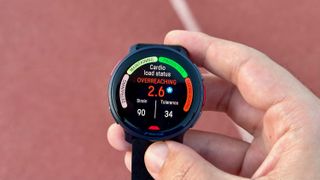
Polar isn't so different from these other fitness watch brands in that it'll also measure your VO2 Max, nightly recharge, and other data passively over time. But it also lets you take that into your own hands, so to speak, with its active testing section.
I can look at my "Cardio Load Status" to see whether Polar's algorithm thinks I'm ready to work out or "overreaching" based on my abilities. But if the estimate doesn't match my perceived energy level, Polar has an orthostatic test that takes a snapshot of my heart rate and heart rate variability (HRV) at rest or while standing.
A full night of HRV data will give Polar more data to work with. But if you don't sleep with your Polar or wear a different tracker to bed (like my Ultrahuman Ring Air), this gives you the info necessary for a judgment call after four minutes of relaxation.
Be an expert in 5 minutes
Get the latest news from Android Central, your trusted companion in the world of Android
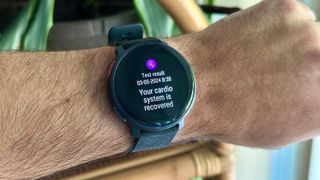
Even better, Polar has a "leg stiffness" test that measures your muscular recovery after runs.
Every post-run marathoner knows the feeling when their heart has recovered but their legs need another week. Other times, my legs feel fine, but my worn-down heart treats a jog like a sprint. Despite that, most fitness watches lump together cardiovascular and muscular recovery by necessity.
It'd be nice if these watches could use running form analysis to adjust recovery time. I'm sure tired muscles affect our vertical lift or cadence or could make our stride imbalanced. In lieu of that, Polar has you jump up and down three times with your hands on your hips. After a couple of tests, it'll have a baseline for your normal jumping abilities; if you fall short, you know you're not ready for a hard run.
I appreciate that Polar lets me check my physical recovery for myself instead of relying blindly on the algorithm.

Then we have my absolute favorite: Polar's VO2 Max running test. I first tried it with the Polar Pacer Pro, one of my first running watch reviews, and I've happily returned to it now that I'm testing the Vantage V3. Essentially, it has you slowly pick up your pace from 15:00/mile downwards until you can no longer keep up, for about 10–15 minutes of easy-to-all-out running.
I ended up tiring out as I hit the sub-6:00 pace window and was rewarded with a 53. For context, that's two points higher than my Garmin VO2 Max average (51). Polar calls it "Very Good" for my age and gender, while Garmin would call it "Excellent." Either way, it's an improvement on where my VO2 Max was a year ago.
I don't know which is more accurate; Garmin works from months of data, while Polar uses the traditional self-guided method. The only definitive way would be to go to a testing lab that measures your breathing on a treadmill.
Frankly, it doesn't matter to me which is better. I just want multiple ways to test for myself.

Raising your VO2 Max is a long, arduous process of increasing your training load week by week; the more you improve, the longer it takes to gain a point. At times, I've questioned whether or not I'm actually improving or if my Garmin Forerunner 965 and its algorithm merely reward me for following the training load suggestions.
That's why having a way to spot-check your VO2 Max is so heartening. Seeing that 53 validated all of the hard track runs and boring low-aerobic jogs I've done to try and improve over the past year.
It also triggered my competitive side: next time I do a manual VO2 Max test, I'm not going to let myself get left behind until I push further into the 5:XX range and score higher!
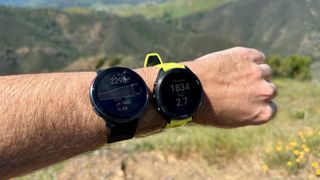
Whichever smartwatch brand you buy, you must trust its algorithm, with no way to tweak the numbers or peek behind the curtain. You must have faith in a brand's reputation, and then spend weeks or months finding out whether the algorithm truly understands your fitness level and how often you need rest.
But even with the most reliable brand, worn for a long time, it doesn't always get things perfectly right. And that's to be expected!
Polar's algorithm isn't any more imperfect than other brands' data. But the Vantage V3's testing suite caters to athletes who want to double-check Polar's suggestions for themselves, especially in the early days of using the watch, and I appreciate that Polar doesn't insist on blind trust — as other brands do.
I'll have my Polar Vantage V3 review completed by next week. Thus far, it did pretty well in a fitness test against COROS and Garmin. I appreciate its comfortable design and straightforward access to specific tools — like Tests — with one or two button presses.
More pertinent to this discussion, I'm hopeful that Polar will continue to expand this testing section over time. It has running, walking, and cycling fitness tests, all variations on the same theme, along with recovery tests. Maybe Polar could offer a hill/stair climber test to see how well you handle elevation gain or an arm strength test to go with its indoor exercise recommendations.
Dedicated athletes are competitive people, and when you give them a way to test and compete against themselves and their own fitness scores, that's always a recipe for success.

Michael is Android Central's resident expert on fitness tech and wearables, with an enthusiast's love of VR tech on the side. After years freelancing for Techradar, Wareable, Windows Central, Digital Trends, and other sites on a variety of tech topics, AC has given him the chance to really dive into the topics he's passionate about. He's also a semi-reformed Apple-to-Android user who loves D&D, Star Wars, and Lord of the Rings.
For wearables, Michael has tested dozens of smartwatches from Garmin, Fitbit, Samsung, Apple, COROS, Polar, Amazfit, and other brands, and will always focus on recommending the best product over the best brand. He's also completed marathons like NYC, SF, Marine Corps, Big Sur, and California International — though he's still trying to break that 4-hour barrier.
